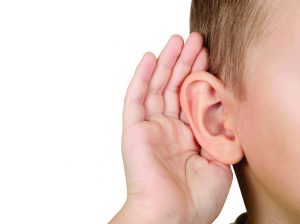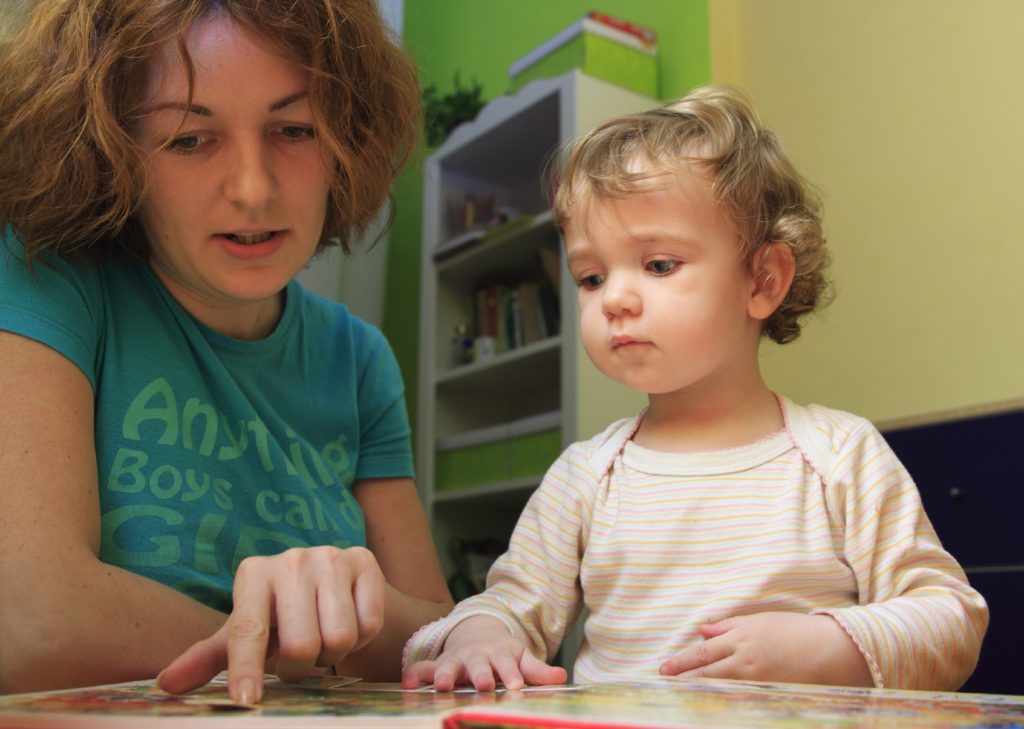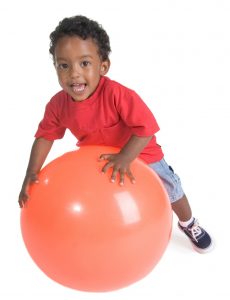Your Listening Ears and Rich Vocabulary Support Your Child’s Brain Development
 Your child may be a small baby who only makes vowel sounds to communicate with you. How do you engage with her at this age to foster her growth?
Your child may be a small baby who only makes vowel sounds to communicate with you. How do you engage with her at this age to foster her growth?
Or your child may be old enough to ask lots of questions about the world around him. Do you take the time to answer him or hold a discussion? Do you encourage your child to take some time to think about the question to see what kind of answer he can make on his own?
Perhaps your child has stories that she wants to share about her day or something she saw. How often do you stop what you are doing to listen carefully and give your child your undivided attention?
Daily communication opportunities are crucial to your relationship and your child’s development. At these stages your child is building the foundation for his language and brain development. Reading aloud with him and continuing his language development cannot be over-emphasized when it comes to its level of importance. The more words, causes and effects, colors, and safe environments for children to explore the better!
Review the tips below on how you can support your child’s brain development:
BIRTH TO 1
[su_list icon="icon: angle-right"]
- Repeat vowel sounds like "ba" "ma" and "da." Make eye contact and imitate your baby’s expressions. Read, count, and talk to them often.
- Show your baby pictures in books. Describe the colors, objects, and meanings.
- When you take your baby out to the zoo, grocery store, or just for a walk around the neighborhood, be sure to talk to them about their surroundings
- Once your baby is pulling up and standing on his own, help him practice walking by holding onto your fingertips.
- Sing “The Itsy Bitsy Spider” or “Patty Cake” while smiling at your baby and doing the hand motions along with the song.
[/su_list]
AGE 1 TO 2
[su_list icon="icon: angle-right"]
- Introduce your child to baby sign language. Start by introducing two to three words while also speaking them. See the link below for more information.
- Play various genres of music and sing together. Observe your child’s face as they hear different tunes. Dance or play along with rattles.
- Help your little one roll a ball or build a tower out of soft blocks. Watch them knock down the blocks and repeat the activity over and over.
- Save a few containers and lids from the kitchen for playtime. Oatmeal, peanut butter, a juice bottle, and rubber containers are easy choices. Allow your child to open and explore.
- Spread a blanket on the floor for you and your child. Using a cookie sheet, place an ice cube on it, then add some water and watch your child explore.
[/su_list]
AGE 2 TO 3
[su_list icon="icon: angle-right"]
- Secure an ice tray to the table. Place different finger foods such as cereal, raisins, or carrots in an ice cube tray and allow your child to taste and explore. Ask them to describe the colors, textures and tastes.
- Think out loud around your baby. "Whoops, I spilled the juice on the table. Time to clean up my mess."
- While reading or out at the grocery store, take time to build your child’s vocabulary. Describe an object in as many words as possible. For example, "that apple is plump, red, smooth, crunchy, sweet, and nutritious."
- Be creative with tub toys by using what you have around the house. Try toilet paper tubes, paper towel tubes, pvc pipes and drinking straws. Watch your little one explore on their own.
- Check out your neighborhood library! Schedule time to attend a book reading with your little one or obtain their first library card.
[/su_list]
AGE 3 TO 4
[su_list icon="icon: angle-right"]
- Play with stamps and ink to make up stories. Help your child by writing the words down, and writing the word for the stamp underneath the imprint.
- Make and play with silly putty (recipe below in resources): Let your child help measure and mix the ingredients. Ask her to describe how it feels.
- Ask your child about his likes and dislikes – “I know you like unicorns. What do you like about them?”
- Read out loud all the time! Not only should you be reading books but you can also read cooking instructions, signs on the road, and more. The more words they are exposed to the better.
- Challenge your child to a game of “what if.” For example, “What would you have done if there was just one apple left but mommy was hungry too?”
[/su_list]
AGE 4 TO 5
[su_list icon="icon: angle-right"]
- Interview your little one each month and record the answers on paper or video it on your phone. See how their opinions grow and change each month. They’ll love reviewing it too!
- Work together to complete a puzzle. Compliment their work with positive phrases that praise their effort such as “I see you put together four pieces on your own. You should be proud of yourself” instead of more general phrases like “good job.”
- Talk your child through the upcoming day. For example, “We will leave for the grocery store when the clock says 5:30 p.m. Once we get there, you can help get the shopping cart and we will put eggs, milk, and noodles in the basket."
- Introduce your child to the post office! Before you go, ave her make a drawing or card for a family member that you can mail once there.
- Help your child learn to identify their emotions by acknowledging your child’s feelings. For example, “You must be happy! I see you have a giant smile on your face.”
[/su_list]
RESOURCES
[su_list icon="icon: angle-right"]
- http://thedeliberatemom.com/opening-containers-an-activity-for-infants-and-toddlers/
- http://helpmegrowutah.blogspot.com/2012/05/cognitive-activities-you-can-do-at-home.html
- http://www.smartschoolhouse.com/diy-crafts/yogurt-silly-putty/2
- http://www.parenting.com/gallery/baby-sign-language-words-to-know
[/su_list]





